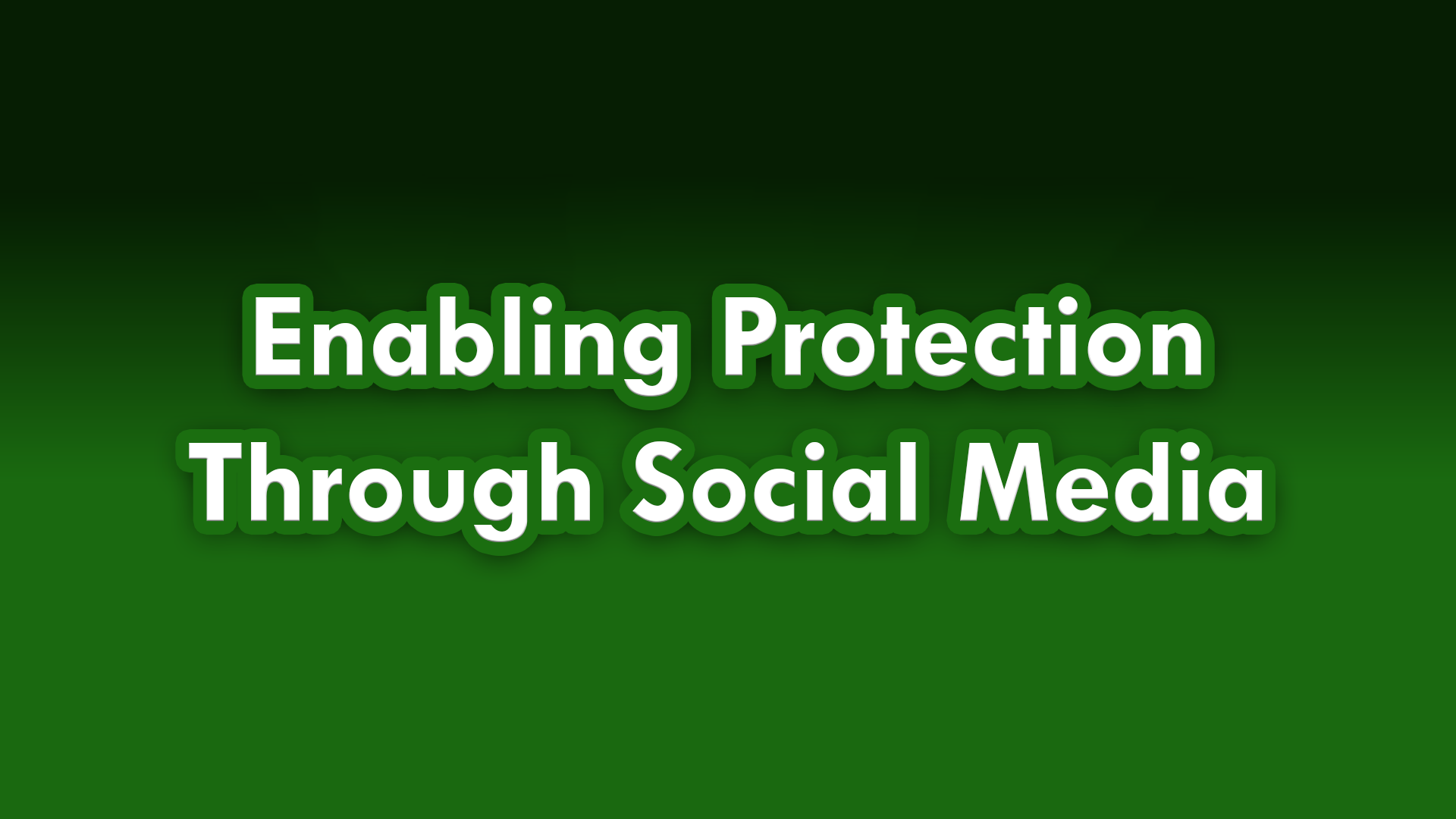Enabling Protection Through Social Media
By First Lieutenant Regina M. Koesters
Article published on: January 1, 2024, in the Annual Issue of the Military Police journal
Read Time: < 4 mins

More than half of all Americans admit to using social media as a primary source of news and information.1 And the influence of social media platforms is rapidly growing and regularly shaping community perceptions.
The military police mission is to provide security and protection to the Army community. Military police units ensure that their Soldiers receive the proper training to appropriately respond to a variety of law enforcement incidents that take place in physical neighborhoods across installations. However, more attention should be paid to protecting digital neighborhoods and mitigating the impact they may have on law enforcement operations. To effectively Assist, Protect, Defend the entire Army community, every provost marshal’s office needs to develop and maintain a social media strategy focused on crisis management, community engagement, and crime prevention.
Crisis Management
Crisis management, a critical element of efficient policing, promotes community safety through clear and concise communication. During a crisis, the reach and influence of military police Soldiers can be extended through social media. Damage is typically done when the community is left uninformed by proper authorities. By analyzing social media trends during crises, it is possible to examine how users may simultaneously spread misinformation and cause further chaos. Regardless of the severity of the situation, incident updates will inevitably be provided in online groups and forums—even if the information is received from other sources.
“A simple post on social media from a trusted law enforcement source can make these preventative re-sources more accessible to the general population, creating a safer and more informed community and reducing the risk of more common crises.”
Real-life crises, such as the 2013 Boston Marathon bombing, serve as fundamental examples of the essential role of social networks during emergency response. Former Boston Police Department Commissioner Edward F. Davis instructed his department to use social media to inform the public about the details of the incident just 10 minutes after the bombing. Therefore, the primary source of accurate information was the official Boston Police Department social media accounts, while other news outlets spread misinformation. Captain Zachary Perone, a public information officer for the Palo Alto, California, Police Department, stated, “[The Boston Police Department] became the news source during the crisis. . . . It was a watershed moment for law enforcement and social media.”2 The community received timely updates regarding the investigation and had a direct line of communication to the authorities. Using social media, the Boston Police Department demonstrated how transparency and trust between law enforcement agencies and the public are vital to the success of crisis management.
Community Engagement
Community policing continues to serve as a primary means of connecting the military with Service members and their Families; however, the focus of community policing is often solely on coordinating in-person events for the community. According to the 2015 Final Report of the President’s Task Force on 21st Century Policing, “Law enforcement agencies should adopt model policies and best practices for technology-based community engagement that increases community trust and access.”3 Social media provides innovative and potentially more engaging communication between these entities, improving transparency and encouraging collaboration. Without a deliberate presence on social media even during mundane daily operations, members of the public may not feel they can rely on the provost marshal’s office as a source of information during a crisis.
Crime Prevention
The goal of military police operations is to uphold the law and promote a safe and secure community. Still, the military policing approach is frequently reactive rather than proactive, potentially resulting in repeat incidents. Social media presents a unique opportunity for a strategy that shifts the focus to proactive policing through crime prevention. Military law enforcement professionals receive training on available resources, including the Family Advocacy Program, the Army Suicide Prevention Program, the Army Substance Abuse Program, and the Sexual Harassment/Assault Response and Prevention Program. A simple post on social media from a trusted law enforcement source can make these preventive resources more accessible to the general population, creating a safer and more informed community and reducing the risk of more common crises.
Conclusion
Integrating social media into law enforcement operations is crucial to enabling protection. A deliberate strategy that includes establishing policies and procedures, identifying goals, and training personnel is necessary. Because technol-ogy and the online world are constantly and rapidly chang-ing, we must continuously adapt our approach based on transparent feedback through polls, open forums, and direct collaboration with the public. Failure to emphasize social media priorities through a strategic approach will limit the ability of each provost marshal’s office to provide safety and security to its community—especially during a crisis.
Notes
1. KiDuek Kim et al., 2016 Law Enforcement Use of Social Media Survey, International Association of Chiefs of Police and the Urban Institute, February 2017, https://www.urban.org/sites/default/files/publication/88661/2016-law-enforcement-use-of-social-media-survey_5.pdf, accessed on 20 June 2024.
2. Jessica Mulholland, “Social Media: Big Lessons From the Boston Marathon Bombing,” Government Technology, 22 April 2021, https://www.govtech.com/public-safety/social-media-big-lessons-from-the-boston-marathon-bombing.html, accessed on 20 June 2024.
3. Final Report of the President’s Task Force on 21st Century Policing, Office of Community-Oriented Policing Services, Washington, D.C., May 2015, https://digital.library.unt.edu/ark:/67531/metadc948674/m2/1/high_res_d/taskforce_finalreport.pdf, accessed on 20 June 2024.
Author
First Lieutenant Koesters is the executive officer for the 552d Military Police Company, Schofield Barracks, Hawaii. She holds a bachelor’s degree in communications from Clemson University, South Carolina.